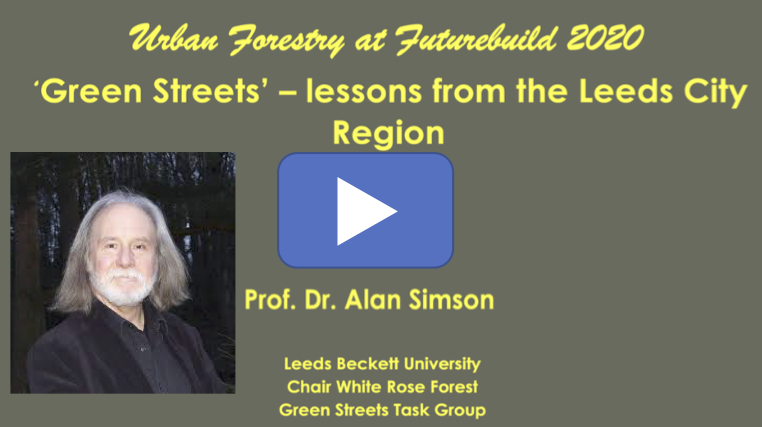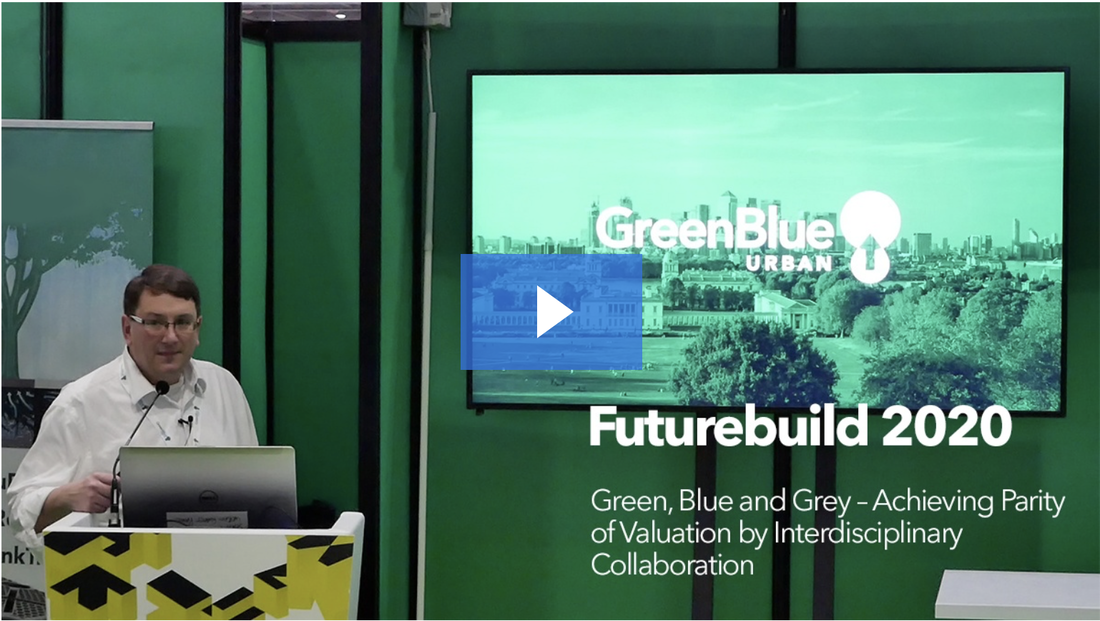The Urban Forest Pavilion, curated by the Trees and Design Action Group, provided a notable landmark at Futurebuild 2020 (3rd-5th March 2020, London, Excel). For interest the programme can be seen here.
A selection of the talks given as part of the workshop programme is available below: some are in simple slide format, others feature slides with voiceover recording and a few were captured live as video recordings.
A selection of the talks given as part of the workshop programme is available below: some are in simple slide format, others feature slides with voiceover recording and a few were captured live as video recordings.
|
Assessing Urban Forest Sustainability in a Changing Climate
[Slides with Voiceover recording] – Dr Kieron Doick, Head of Urban Forest Research Group, Forest Research i-Tree Eco will celebrate its 10th Birthday in the U.K. in 2020. Over this past decade, and through the implementation of i-Tree Eco, new insight has been gained into the composition, structure and health of our urban forests. Drawing upon international literature and data collected through I-Tree Eco studies conducted in the UK, this talk reflects on the status of our urban forests, and their sustainability in light of climate change. |
|
Urban Hedges: Many Green Infrastructure Benefits
[Slides with Voiceover recording] – Tijana Blanusa, Principal Horticultural Scientist, Royal Horticultural Society Urban hedges have been shown to provide a range of environmental benefits: acting as noise and pollution screens, habitat for small animals, reducing water runoff, to name just a few. The talk sheds light on what we know currently about the planting choices and combinations likely to bring us the most benefits. |
|
Tree Planting Strategies
[Slides with Voiceover recording] – Kenton Rogers, Co-founder, Treeconomics This talk looks at how i-Tree and other spatial data can be used to prioritise tree planting to maximum effect. Directing resources to the areas that most need it and to maximise environmental benefits. Examples from Islington, Europe and the UK will be used to highlight this approach. |
|
Green Streets: Learning from Leeds City Region
[Slides with Voiceover recording] – Professor Dr. Alan Simson, Professor of Landscape Architecture and Urban Forestry, Leeds Beckett University ‘Green Streets’ is the name of one of the main projects being carried out throughout the Leeds City Region by the White Rose Forest. Initially the project set out to provide attractive green corridors connecting area of deprivation to areas of job growth across West Yorkshire. More recently however, it has expanded its mission to plan, design, implement and manage a broader remit to bring green infrastructure, especially trees, into all parts of the Leeds Poly-Centric City Region. |
|
Green, Blue and Grey – Achieving Parity of Valuation by Interdisciplinary Collaboration
[Video captured live] – Howard Gray, PR & Specification Consultant, GreenBlue Urban How best practice design collaboration including green infrastructure early in the process helps attain sustainable development for the long term, for all stakeholders. |
|
Green Infrastructure for Roadside Air Quality: Introducing Free, Prototype Software to Predict the Site-specific Impacts of ‘GI4RAQ’
[Slides] – Dr James Levine, Senior Research Fellow, School of Geography, Earth Environmental Sciences, University of Birmingham Nationally, vegetation plays a valuable role in removing air pollution. Its main role at the scales of urban planting, however, is different: not removing pollution per se, but altering its distribution by changing patterns of air flow. We introduce here the first software to enable you to predict the highly-localised impacts of green infrastructure on exposure to road transport pollution in the urban realm (subject to local conditions of wind and urban form): it will be freely available and open source. |







